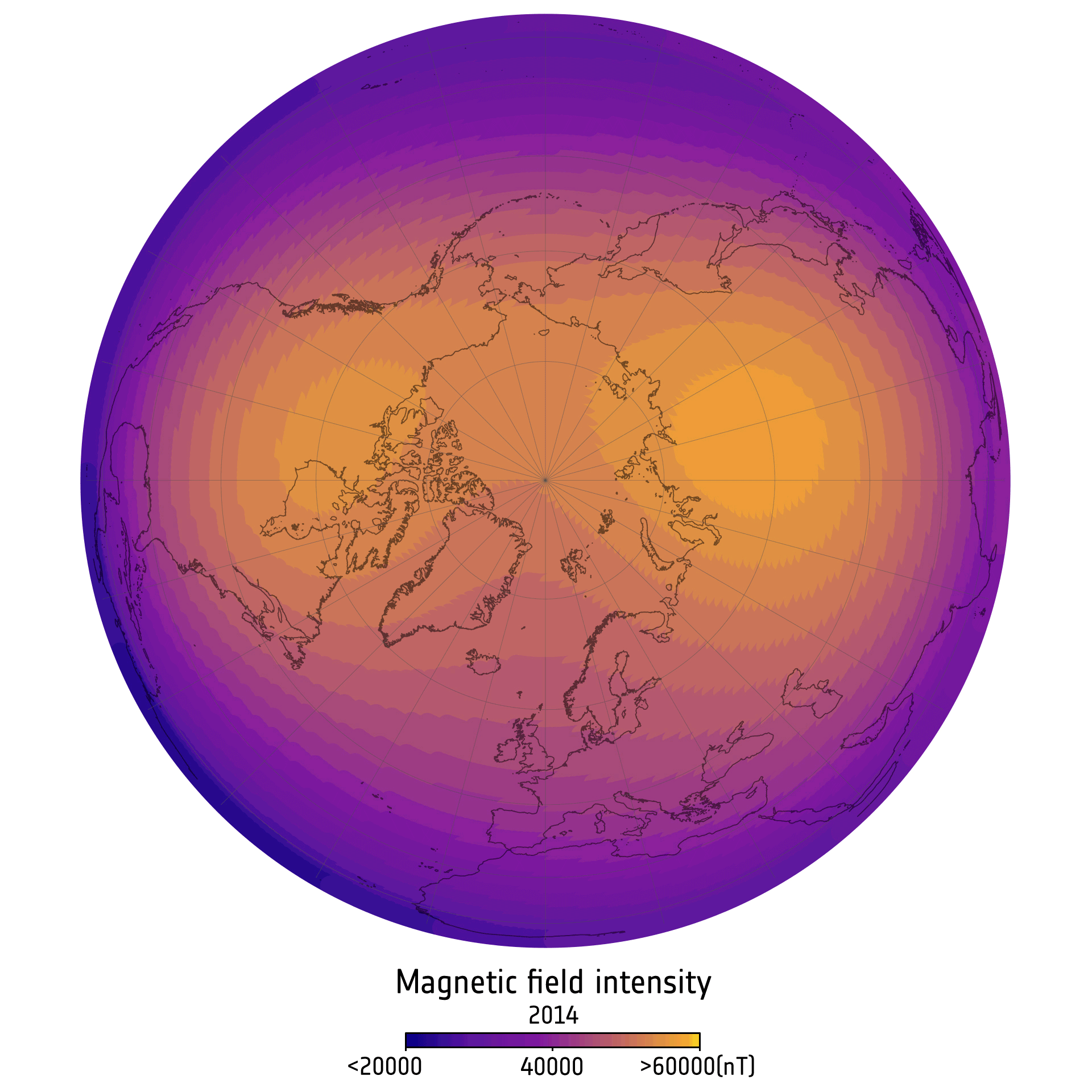Weak point in Earth's magnetic field According to satellite data, the size has increased sharply over the South Atlantic Ocean since 2014.
This region, known as the South Atlantic Anomaly, has expanded to cover nearly half the area of continental Europe, forming a portion towards Africa where the field weakens fastest.
“The South Atlantic Anomaly is not just one block,” said the study's lead author. Chris FinleyThis was stated by a professor of geomagnetism at the Technical University of Denmark. statement. “It changes differently in Africa than near South America. There's something special going on in this region that's causing the field to weaken more intensely.”
Researchers first discovered the South Atlantic Anomaly in the 19th century. Within its boundaries, the magnetic field emanating from the bowels of the Earth drops to a height about 120 miles (200 kilometers) above the planet's surface, which is much lower than the average field height about 400 miles (650 km).
This poses a threat to satellites and other spacecraft. Earth's magnetic field shields the planet and objects in low Earth orbit from charged solar particles and incoming X-ray and ultraviolet radiation, so spacecraft traveling over the South Atlantic Anomaly are exposed to more of these effects. According to the statement, this could lead to malfunctions or damage to equipment and even power outages.
Finley and his colleagues believe the South Atlantic Anomaly is growing and spreading eastward due to strange flows at the boundary between Earth's mantle and outer core, layers of the planet sandwiched between the Earth's crust and inner core.
Earth's magnetic field is primarily generated by Earth's outer core, an ocean of spinning molten iron located about 1,900 miles (3,000 km) below the planet's surface. The liquid iron dynamo generates electrical currents, and their flow induces a magnetic field that travels up the mantle and through the Earth's atmosphere, forming two giant rings that meet near the poles.
Previously, scientists had discovered that in some areas beneath the South Atlantic Anomaly, magnetism generated by the outer core returned to the core rather than flowing out. These structures, known as ripple patches, can migrate and expand, which explains the growth of the South Atlantic Anomaly over the past 11 years, Finley said.
“We see one of these areas moving west over Africa, which is helping to weaken the South Atlantic Anomaly. [the magnetic field] in this region,” he added.

Scientists have noticed unusual changes in the data European Space AgencyThe European Space Agency's current Swarm mission uses three identical satellites to measure magnetic signals emanating from the Earth's interior and oceans. The data also revealed changes in magnetic field dynamics over Canada and Siberia, where magnetism appears more intense than average since Swarm began its observations in 2013.
Since 2014, the magnetic field over Canada has weakened slightly, but over Siberia it has strengthened, a new study shows. The strong region over Canada shrank to almost the size of India, while the strong region over Siberia expanded to the size of Greenland. Researchers have attributed these changes to a shift in Earth's magnetic north pole towards Siberia in recent years, but more monitoring is needed to see how the dynamics develop.
“It's truly wonderful to see the big picture of our dynamic Earth,” Anya flowThis is stated in a statement by the head of the ESA Swarm mission. “All the satellites are working well and providing excellent data, so we hope that we can extend this record beyond 2030.”







